21 F. average high on January 21.
29 F. high on January 21, 2015.
January 22, 1982: The Twin Cities receive 21.1 inches of snow, with a total of nearly 40 inches on the ground.
January 22, 1936: Perhaps the coldest wind chill the Twin Cities has ever seen occurs on this day; it hits -67 with the new wind chill formula (-87 with the old formula). The temperature was -34 with a wind speed of 20mph. All traffic in the Twin Cities was severely hampered and a number of fatalities were caused by the cold.
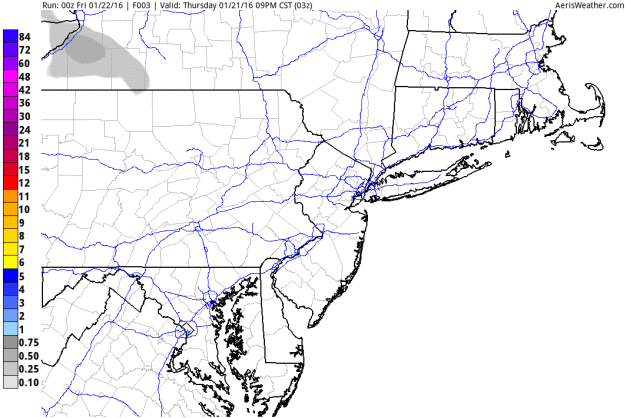
Full-Blown Blizzard Out East - A Few (Minor) Clippers Here
"A lot of people like snow. I find it to be an unnecessary freezing of water" quipped comedian Carl Reiner. Folks living near Washington D.C. may soon agree. Media spin is in overdrive and the hype may be warranted this time.
"A lot of people like snow. I find it to be an unnecessary freezing of water" quipped comedian Carl Reiner. Folks living near Washington D.C. may soon agree. Media spin is in overdrive and the hype may be warranted this time.
Washington is a city of
"southern efficiency and northern hospitality", said John F. Kennedy.
It's a city where a FORECAST of 1-3" of snow can empty out supermarket
shelves and trigger snow days.
The blizzard
charging up the east coast will dump close to 2 feet on DC, with 5-8
foot drifts. New York City will see less (6-10 inches) but coastal
flooding from 50 mph onshore winds will be severe.
While
we tune in The Weather Channel to remind us what an epic snowstorm
looks like Minnesota will experience a parade of minor clippers next Monday, Wednesday and Friday - each one capable of a snowy burst. No school-closing snows in sight.
No more cold waves either, in fact we may hit freezing 4 days next week.
We've picked up 38 minutes of daylight since December 21. Thank (or blame) El Nino for a southerly detour in the storm track. Maybe next winter.
* NAM snowfall potential animation courtesy of NOAA and AerisWeather.
Aeris Weather Intermediate Update: Issued Thursday night, January 21, 2016.
Here's what's new and what has changed:
* Snow starts up Friday afternoon in D.C. - peak of the storm is Friday night, when snow falls at the rate of 1-2"/hour.
Latest Predictions.
The axis of heaviest snow is still expected to fall west of I-95, where
some 2-3 foot amounts are likely by Sunday. NAM guidance from NOAA
displayed. Map: AerisWeather.

Storm Track Shifts North.
Latest guidance suggests a northward "wobble" in the track, pushing the
heavy snow band into Hartford, Providence and Boston. Some ice may mix
in near the coast, but temperatures in the lowest mile of the atmosphere
are still cold enough for primarily snow. Map: WeatherBell.

Latest Warnings.
Blizzard Warnings are in effect for Washington D.C. and Baltimore; I
have a hunch the Blizzard Watch for New York City will be upgraded to a
Blizzard Warning, based on the latest guidance. Winter Storm
Watches/Warnings may be pushed farther north into New England, including
Boston.
Coastal Flood Threat. NOAA has issued Coastal Flood Watches from the Virginia Tidewater north to Long Island Sound. The greatest risk of flooding comes close to high tide Saturday and Sunday. Although this won't rival "Sandy" for storm surge, this system is not your typical Nor'easter - water damage may be extensive, comparable to a strong tropical storm going up the coast. Map: AerisWeather.

Timing the Storm. The heaviest snows are shaded in purple, blue is ligher snow and green denotes rain. You can watch the evolution of heavy snow bands as the Nor'easter pushes up the coast late Friday into Sunday:
East Coast "Snowmageddon": Random Fluke or Trend? According to climate researcher Hunter Cutting: "11
of the top 30 snowfall events since 1880 in the DC/Balt area have
occurred in just the last 5 years. 18 of the top 30 since 1880 have
occurred in the last 35 years. Only 12 of the top 30 events occurred in
the 80 years between 1880 and 1960."
Blizzard Storm Surge Could Rival an East Coast Hurricane Landfall.
Due to a confluence of factors, including a full moon and a strong and
sustained fetch of wind, magnified at high tide. Here's an excerpt fromm
Eric Holthaus at Slate: "...Before Hurricane Sandy, the second-highest water level ever measured in New York City (after 1960’s Hurricane Donna) was from a December 1992 winter storm
that produced more than 3 feet of snow in Maryland with drifts up to 20
feet high, hurricane force winds at the New Jersey shore, power outages
to hundreds of thousands of people, $2 billion of damage, 25-foot waves
offshore, and flooded thoroughfares in Manhattan. Along with several other infamous winter storms of the past few decades, the 1992 storm is now one of the leading historical analogues for this week’s blizzard. Like the 1992 storm, this week’s blizzard will arrive during a full moon, when hide tide levels are highest..."
Good and Boring.
A few clippers are on the way, a light accumulation possible as early
as Monday, by late next week it may be warm enough aloft for a sloppy
mix. Temperatures run above average for the next week to 10 days. Thank
God it's quiet. I don't think my broken ankle or palpitating heart could
take big weather in Minnesota right now. Graphic: WeatherSpark.
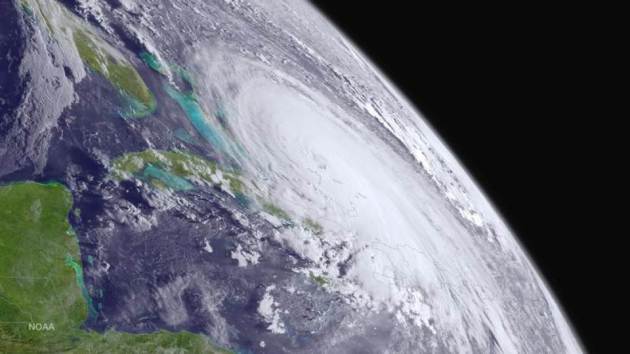
Image credit above: "Hurricane Joaquin is seen over the Bahamas in the Atlantic Ocean in an image from the NOAA GOES West satellite, Oct. 1, 2015." REUTERS/NOAA/Handout via Reuters.

Analysis: How 2015 Became the Hottest Year on Record. Carbon Brief takes a look at how global temperatures and trends are measured; here's an excerpt: "...As
well as being a symptom of the long term warming trend, scientists are
interested in 2015 global temperature because of what it tells us about
how natural fluctuations in the climate can act to amplify or dampen the
warming signal, Osborn explains. A huge El Niño in the Pacific – among the biggest on record
– contributed to the record warmth in 2015, say scientists. In
total, 10 out of the 12 months in 2015 either tied with or broke
previous records, according to NASA and NOAA’s joint analysis. Since the El Niño only recently reached peak strength, scientists expect its impact to be even larger in 2016..."
Graphic credit above: "Global
average surface temperatures in the three major global datasets, all
relative to the 1961-1990 average: Met Office/University of East Anglia
(blue), NASA (orange) and NOAA (red)." Credit: Rosamund Pearce, Carbon Brief.
Bloomberg has effective graphics that show temperature trends over 136 years here.
2015: Hottest Worldwide, Second Hottest in the USA on Record. Details via The New York Times.

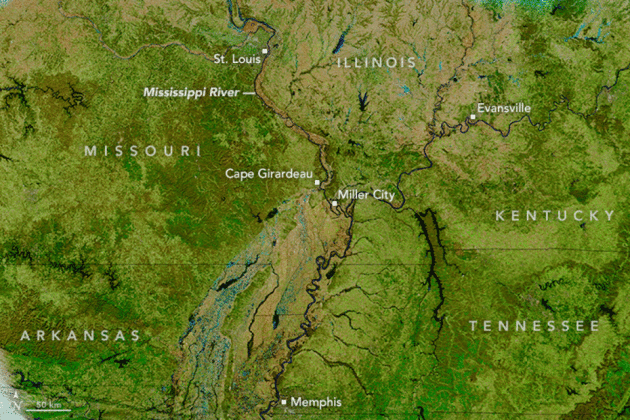
Animation credit: "A comparison of NASA satellite images of the Mississippi River on January 3, 2016, and January 10, 2015". (Photo: NASA)
15 Before-And-After Images That Show How We're Transforming the Planet. Vox has a terrific photo-essay; here's an excerpt: "...One of the most dramatic ways we're transforming the planet is through global warming. And a great place to see its effects is through the melting of glaciers and ice sheets around the world. The images above show the Columbia Glacier in Alaska, which flows directly into the sea. The glacier had stayed more or less fixed in place between its discovery in 1794 and 1980, but then suddenly began shrinking. Between 1986 and 2014, its nose had retreated 12 miles north, making it one of the fastest-receding glaciers in the world..."
Image credit above: "Alaska's Columbia Glacier, seen on July 28, 1986 and July 2, 2014." (NASA, Images of Change)
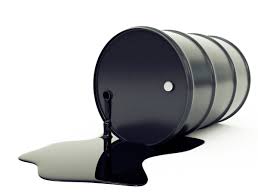
Amidst Drop in Oil Prices, U.S. Navy Deploys "Great Green Fleet". Reuters reports: "The U.S. Navy will formally deploy its so-called "Great Green Fleet" on Wednesday, sending warships to sea on biofuels even though oil prices have dropped 70 percent since congressional Republicans first criticized the high cost of alternative fuels. Navy Secretary Ray Mabus told Reuters the deployment is the next step in a fleet-wide effort that has seen the Navy cut its oil consumption by 15 percent since he took charge in 2009 and the Marine Corps curb its use by 60 percent. A focus on energy and energy-saving technology gives the U.S. Navy a military advantage, Mabus said..."
Photo credit above: "A cyclist rides his bicycle during “No Car Day” in Bogota, 2015. The event was organized to encourage residents to use other modes of public transportation to help reduce the amount of pollution." Photograph: Jose Gomez/Reuters.
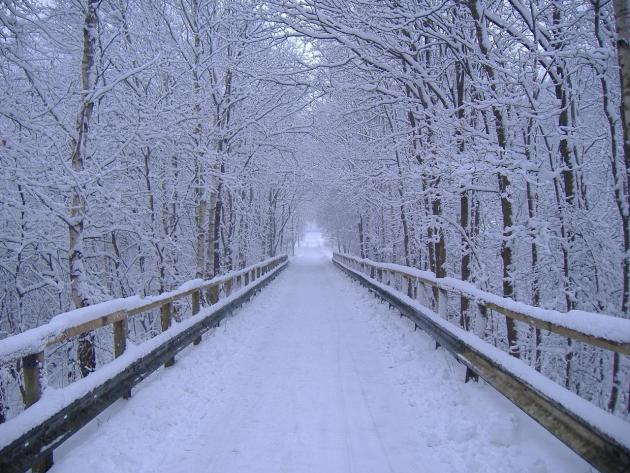
TODAY: Partly sunny, brisk. Winds: N 5-10. High: near 20
FRIDAY NIGHT: Partly cloudy. Low: 10
SATURDAY: Fading sun, stiff breeze. Winds: S 10-20. High: 26
SUNDAY: Mostly gray, risk of a thaw. Winds: SE 7-12. Wake-up: 20. High: 32
MONDAY: Couple inches of snow possible. Wake-up: 26. High: 30
TUESDAY: Mostly cloudy, better travel day. Wake-up: 19. High: 23
WEDNESDAY: Dry start, burst of light snow late? Wake-up: 17. High: 27
THURSDAY: Mostly cloudy, milder than average. Wake-up: 21. High: 31
Climate Stories...
Global Warming in 2015 Made Weather More Extreme and It's Likely To Get Worse. Jason Samenow has an Op-Ed at The Washington Post; here's an excerpt: "...On Wednesday, the National Oceanic and Atmospheric Administration and NASA jointly announced that 2015 was the warmest year on record for the planet. The previous record, set just 12 months ago in 2014, wasn’t merely broken, it was smashed. There’s a saying that numbers numb and stories sell, but the latest climate numbers tell a story that is stunning. Including 2015, 15 of the 16 warmest years in NOAA’s 136-year climate record have occurred since 2000. And 2015 marks the 39th consecutive year, dating to 1977, in which global temperatures have been above the 20th-century average..."
Photo credit above: Sue Ogrocki/AP Photo.
AP Fact Check: Ted Cruz Misstates Science of Climate Change. Why the double-speak? Follow the money, specifically the source of campaign contributions. Here's an excerpt from AP:"...CRUZ: "The satellites that actually measure the temperature, that we've launched into the air to measure the temperature, they have recorded no significant warming whatsoever for the last 18 years."
THE
FACTS: Scientists, including those who work with the very satellite
measuring system that Cruz refers to, say he's misusing the satellite
data. They do show warming, albeit relatively little over the period
Cruz cites, says Carl Mears, senior scientist for Remote Sensing
Systems, which produces the data that Cruz refers to. But by starting
his comparison period in 1997, Cruz has selected a time when
temperatures spiked because of an El Nino weather pattern. Starting at
an artificially high point minimizes the rate of increase since then,
Mears said, adding, "If you start riding your bike at the top of a big
hill, you always go downhill, at least for a while..."
A Striking Resemblance Between Testimony for Peabody Coal and for Ted Cruz. Climate scientist John Abraham at the University of St. Thomas has the story at The Guardian; here's an excerpt: "...Why
does this Peabody Coal case in Minnesota matter? Well, the same
arguments were made by Ted Cruz and his contrarian witnesses in December
in Washington DC. You can watch the video here. You can read John Christy’s testimony here. You can read Judith Curry’s written testimony here.
The similarity between this group of contrarian documents is shocking.
It is almost as if portions of their testimony were cut and paste. I am
not really surprised the Ted Cruz would question climate science. And I
am not surprised the well-known contrarians Judith Curry, John Christy,
William Happer, Roy Spencer, and Richard Lindzen continue to question
the mainstream expert consensus. I am not really surprised that some of
these scientists are representing fossil fuel companies in litigation or
hearings. What I am surprised about is that they are being so selective
in presenting data and not telling the full story..."
Photo credit above: "Peabody Energy headquarters in St. Louis". Photograph: Jeff Roberson/AP
Climate Change Could Cost Jobs in South Florida, Says White House Advisor. Here's an excerpt from The Miami Herald: "....There’s
probably no place in the country where you can have less of an argument
about climate change than South Florida,” said Robert Simon, an adviser
in the White House’s Office of Science and Technology Policy. “You see
it everyday in Miami Beach.” Flooding and coastal erosion could threaten
Miami’s tourism and real estate sectors, he said. And climate
change-caused disruption around the world could disrupt the global
supply chain, killing the region’s ability to import and export valuable
goods..."
 Walmart CEO in Davos: Ignore Climate Skeptics. Climate Home has the story; here's the intro: "America’s
largest private employer is “leading by example,” Doug McMillon claimed
in Davos on Wednesday, slashing electricity use in stores and excess
packaging. Speaking at the World Economic Forum, he advised business
leaders to ignore those who dismissed the science of climate change. “At
Walmart, we are very familiar with scepticism,” McMillon said. “It’s
got to a point where we just ignore it. Doing the right thing is good
for business. Where the population is not like-minded it doesn’t matter.
The decisions behind the scenes improve the products we’re making...”
Walmart CEO in Davos: Ignore Climate Skeptics. Climate Home has the story; here's the intro: "America’s
largest private employer is “leading by example,” Doug McMillon claimed
in Davos on Wednesday, slashing electricity use in stores and excess
packaging. Speaking at the World Economic Forum, he advised business
leaders to ignore those who dismissed the science of climate change. “At
Walmart, we are very familiar with scepticism,” McMillon said. “It’s
got to a point where we just ignore it. Doing the right thing is good
for business. Where the population is not like-minded it doesn’t matter.
The decisions behind the scenes improve the products we’re making...”
 In Global Warming Bets, Record 2015 Heat Buoys Mainstream Science. Reuters has the details; here's a clip: "For
British climate expert Chris Hope, new data showing that 2015 was the
hottest year ever recorded is not just confirmation he's been right all
along that the planet is getting warmer. It also won the Cambridge
University researcher a 2,000 pound sterling ($2,830) wager made five
years ago against a pair of scientists who reject man-made global
warming and bet Hope that the Earth would be cooling by now. NASA, the
U.S. National Oceanic and Atmospheric Administration (NOAA) and the
British Met Office said on Wednesday that 2015 was the warmest year
recorded since 1880, boosted by a long-term build-up of greenhouse gases
and a natural El Nino event warming the Pacific Ocean..."
In Global Warming Bets, Record 2015 Heat Buoys Mainstream Science. Reuters has the details; here's a clip: "For
British climate expert Chris Hope, new data showing that 2015 was the
hottest year ever recorded is not just confirmation he's been right all
along that the planet is getting warmer. It also won the Cambridge
University researcher a 2,000 pound sterling ($2,830) wager made five
years ago against a pair of scientists who reject man-made global
warming and bet Hope that the Earth would be cooling by now. NASA, the
U.S. National Oceanic and Atmospheric Administration (NOAA) and the
British Met Office said on Wednesday that 2015 was the warmest year
recorded since 1880, boosted by a long-term build-up of greenhouse gases
and a natural El Nino event warming the Pacific Ocean..."
Photo credit above: "Wildfires devastated large parts of California and the West, which has been suffering from a historic drought." Max Whittaker/Reuters.
Photo credit above: "Exxon Mobil, which operates a refinery in Torrance, above, has issued statements denying news reports that it suppressed climate-change research." (Christina House / For The Times).
Pentagon Ordered to Address Climate Change. Here's the intro to story at The Washington Free Beacon: "A new directive issued by Pentagon leaders mandates that the agency work to “assess and manage risks associated with the impacts of climate change,” according to a copy of the Jan. 14 directive issued by Deputy Secretary of Defense Robert Work. As the Obama administration focuses on a larger effort to push its climate change agenda, the Pentagon will now “address the impacts of climate change.” This includes engaging in “deliberate preparation, close cooperation, and coordinated planning” to “improve climate preparedness and resilience,” according to the directive..." (File photo: Wikipedia).
Climate Change and Minnesota Agribusiness: a Reason for Hope. I've personally witnessed much more attention being paid to climate volatility from General Mills, Cargill and other Minnesota-based companies. Here's another perspective in an Op-Ed at Minnpost: "Too often big business is written off as an environmental problem, without exploring its potential as a tool for progress. Agribusiness must be part of the solution for climate-change adaptation, especially for smallholder farmers in the global south. Right now, the fields in Minnesota may be covered with snow, but according to social responsibility reports, corporations like Cargill and General Mills are helping farmers in developing countries improve their livelihoods. Conscious consumers should demand more information about these programs to determine if they are creating the social impact they claim to generate..."
Photo credit above: CC/Flickr/David Wright. "Agribusiness is a leading contributor to climate change. The industry and lawmakers should do more to address this issue and support the farmers most affected by our carbon-intensive lifestyles."

No comments:
Post a Comment